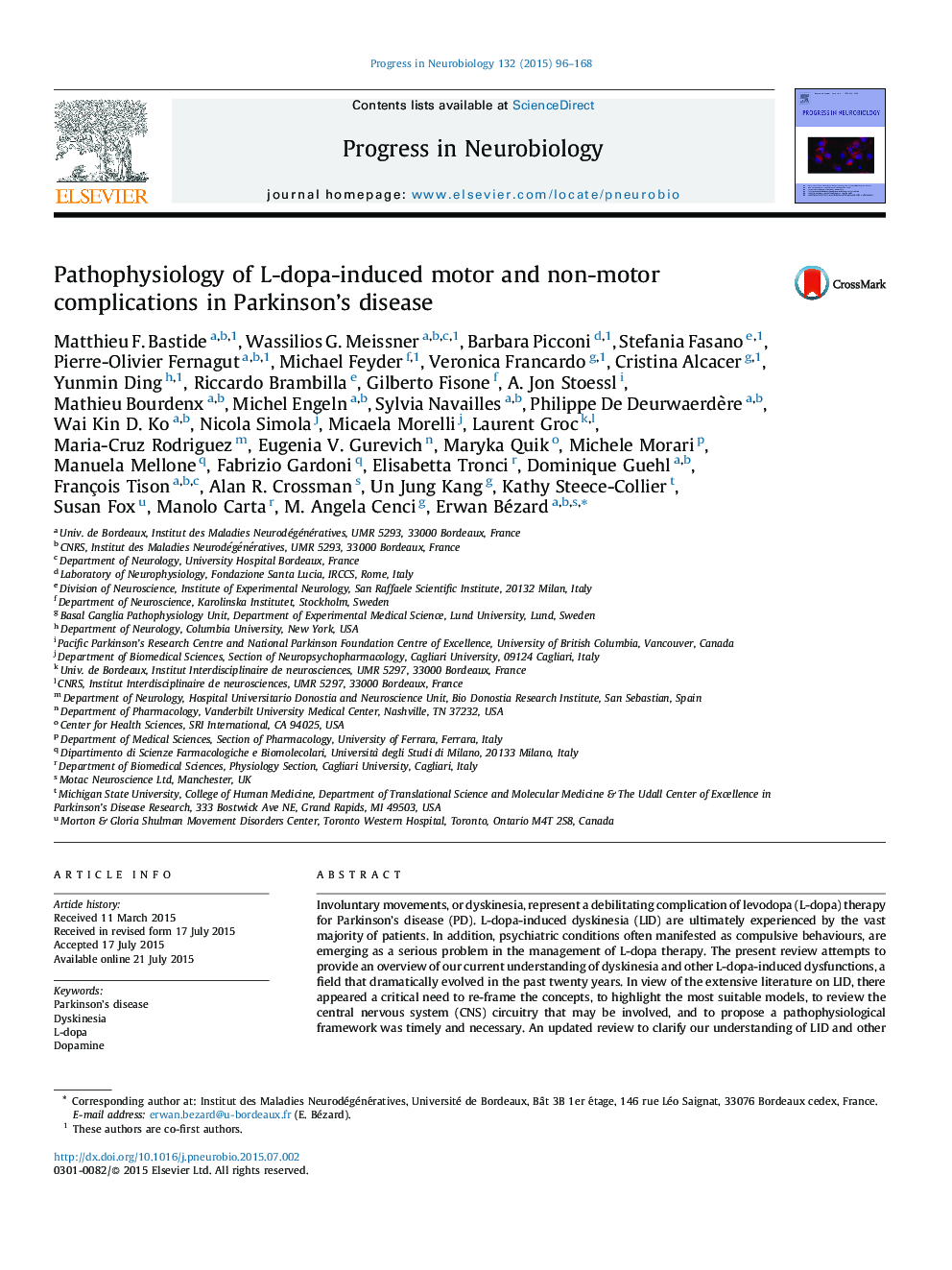| Article ID | Journal | Published Year | Pages | File Type |
|---|---|---|---|---|
| 4353247 | Progress in Neurobiology | 2015 | 73 Pages |
•Dyskinesia represents a debilitating complication of levodopa therapy for Parkinson's disease.•There appeared a critical need to re-frame the concepts, to highlight the most suitable models, to review the central nervous system circuitry.•To propose a pathophysiological framework was timely and necessary.•This review thus provides an overview of our current understanding of dyskinesia.
Involuntary movements, or dyskinesia, represent a debilitating complication of levodopa (L-dopa) therapy for Parkinson's disease (PD). L-dopa-induced dyskinesia (LID) are ultimately experienced by the vast majority of patients. In addition, psychiatric conditions often manifested as compulsive behaviours, are emerging as a serious problem in the management of L-dopa therapy. The present review attempts to provide an overview of our current understanding of dyskinesia and other L-dopa-induced dysfunctions, a field that dramatically evolved in the past twenty years. In view of the extensive literature on LID, there appeared a critical need to re-frame the concepts, to highlight the most suitable models, to review the central nervous system (CNS) circuitry that may be involved, and to propose a pathophysiological framework was timely and necessary. An updated review to clarify our understanding of LID and other L-dopa-related side effects was therefore timely and necessary. This review should help in the development of novel therapeutic strategies aimed at preventing the generation of dyskinetic symptoms.
